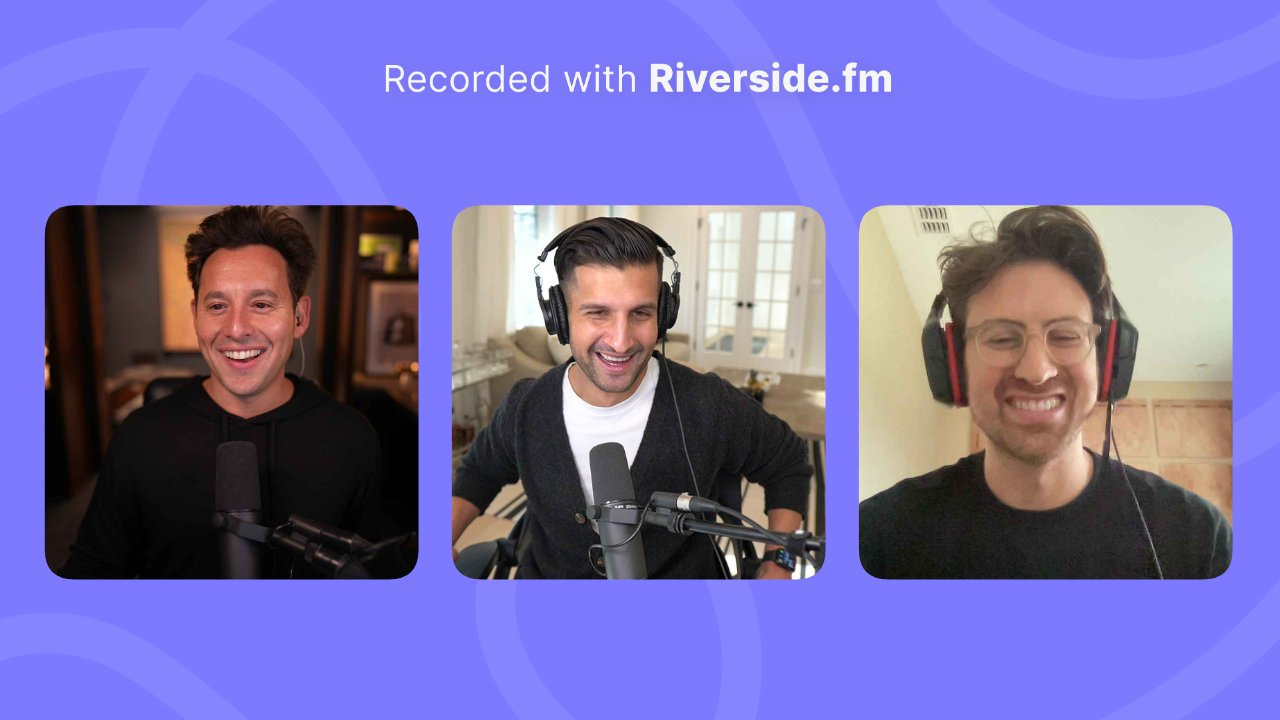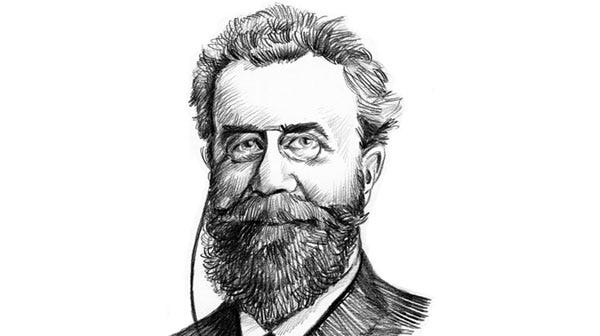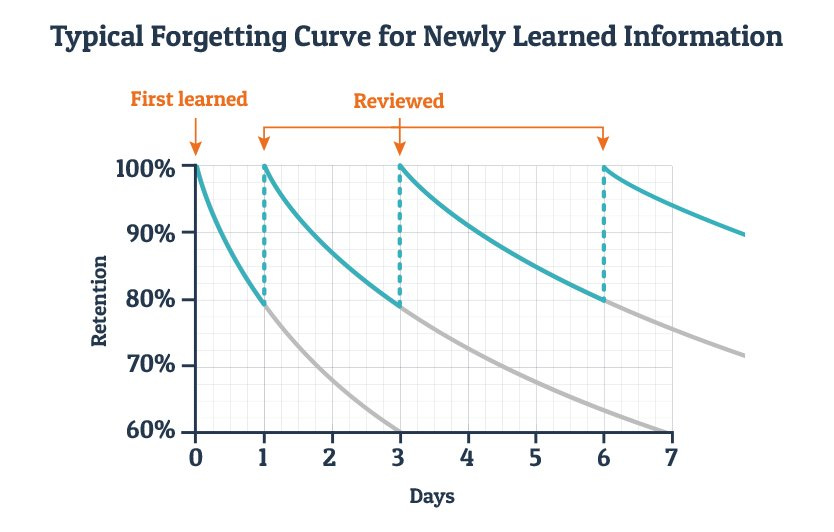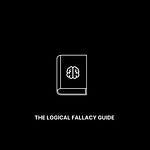Welcome to the 1,116 new members of the curiosity tribe who have joined us since Friday. Join the 68,953 others who are receiving high-signal, curiosity-inducing content every single week.
Today’s newsletter is brought to you by Trends!
Trends is my personal cheat code for generating new business and content ideas.
It’s a premium newsletter from The Hustle that deconstructs the secret sauce of interesting businesses, side hustles, and emerging opportunities—and gives you the playbook to pounce on them. Even better, membership provides instant access to an exclusive community of 15,000+ entrepreneurs who are building the future.
I learn something new from every single issue—it has become a core part of my content and learning engine. A true must-read. I can’t recommend it highly enough.
Use the link below to join—no commitment, no catch, cancel anytime!
Today at a Glance:
Learning is a meta-skill—arguably the most important meta-skill.
School taught us many things, but unfortunately, how to learn was not one of them.
The retention framework I use involves five steps: (1) Inspired Consumption; (2) Unstructured Note-Taking; (3) Consolidation; (4) Analogize; and (5) Idea Exercise. The structure is sequential, but its practice is often dynamic & iterative.
Spaced Repetition is the most formal—and powerful—idea exercise method. It’s a method in which information is consumed at increasing intervals until it's committed to long-term memory. It leverages cognitive science—the way our brains work to convert short-term to long-term memory—to help you retain newly-consumed information.
How to Retain What You Learn
Learning is a meta-skill—arguably the most important meta-skill.
School taught us many things, but unfortunately, how to learn was not one of them.
Learning is how we adapt to our changing environments, circumstances, and situations. Learning allows us to create new “maps”—and edit old ones—in order to navigate the dynamic, highly-complex world with confidence.
Growth is fundamentally driven by the long-term accumulation and compounding of usable learning. We accumulate and compound this learning through consumption and retention. Consumption is the inputs—what comes in. Retention is what remains after any leakage.
Imagine your brain like a bathtub.
The faucet is the entrance, the drain is the exit. Everything you research and consume flows in through the faucet. Everything you forget flows out through the drain.
I’ve written a lot about the faucet in the past—here and here most recently—but I’ve never talked about the drain.
Let’s fix that today—let’s talk about learning retention.
Learning from The Matrix
I love The Matrix. It’s not just sci-fi, there is a lot we can draw from it about learning and retention.
Bear with me…
In one of the early scenes of the first film, Keanu Reeves’ character—Neo—is plugged into the system and has a program uploaded into his brain. He has a moment of shocked revelation where he looks up and says, “I know kung fu.” He proceeds to demonstrate his new mastery in a virtual sparring room. Most importantly, Neo never forgets this new skill.
To be sure, this isn’t that crazy an idea. Our brains are just software. When we learn, we are updating that software. But in the real world, though, our software is flawed and buggy—we forget important things or overwrite old data all the time.
Our best bet? Develop a strategy for retention that is grounded in science. An approach to retention that is as integrated and comprehensive as our approach to learning. We may not become Neo, but we can become more Neo-like.
The Retention Framework
Here's a tactical framework for improving your retention…
The retention framework I use involves five steps:
Inspired Consumption
Unstructured Note-Taking
Consolidation
Analogize
Idea Exercise
The structure is sequential, but its practice is often dynamic & iterative.
Let's walk through each of the steps...
Step 1: Inspired Consumption
Retention starts with consumption.
I bucket consumption into two types:
Forced: Compelled, either internally or externally.
Inspired: Driven entirely by your internal inspirations.
If you've ever been in school, you know what forced consumption looks like. Forced consumption is the book you're told to read, despite the topic being of zero interest to you. It's the foundation of much of the traditional education system—yet another reason why so many of us are bad at learning retention!
Inspired consumption is when you feel genuinely pulled to consume—when you enjoy the consumption process.
It requires the willingness to put ego aside and "quit” more books (or content) when that genuine inspiration fades.
Inspired consumption is important for retention for two key reasons.
Inspiration is a precursor to flow. More flow state, more retention.
Inspiration fuels engagement. Engage with the content, retain the content.
Inspired consumption is the foundation of retention.
Step 2: Unstructured Note-Taking
When you start consuming, you should have a note-taking system in front of you.
Sahil Note: I use Notion for my note taking, but there are probably 10 other options out there (and I’m currently evaluating Obsidian as another option for more networked notes). The old fashioned way—pen and paper—works too, with the caveat that searchable notes are ideal in my opinion.
On the first pass through the material, keep your notes as unstructured and free-flowing as possible.
What to take note of:
Foundation-building ideas
Novel insights
Things that made you go “hmmm” or “wow!”
Connections you identified to other topics
Questions or confusion
Strong reactions you had to new information
Remember: This first pass of notes is intended to be unstructured. The simple act of writing helps ideas stick.
Step 3: Consolidation
Zoom out and review your unstructured notes.
What are the most interesting, novel insights or ideas? What are the most confusing?
Consolidation is where you re-consume content with a specific focus on building structure around your notes in these particular areas.
If unstructured note-taking created a bunch of dots, consolidation is where you start connecting them.
It doesn't have to be perfect, but you should start to form a more refined picture as you re-consume the content for this purpose.
Consolidation is when knowledge begins to stick.
Step 4: Analogize
Analogizing is the most effective—and least well-known—retention tool.
This is where you take your newly-learned information and place it within your broader mental maps. You make clear comparisons and connections between newly-learned and existing information.
Here's a real example from my writing to illustrate how this works:
I did a bunch of research on Morris Chang and Taiwan Semiconductor Manufacturing Company for a piece. During my consolidation, it struck me that TSMC's novel pure-play chip manufacturer model had enabled independent chip designers to start their own companies.
As I started the process of analogizing, I searched for a connection point—something to tie this newly-learned information to some existing information in my brain.
Then, it hit me: this looked very similar to what Shopify had done in creating infrastructure that enabled independent players to sell online.
I had created context for the new learning within my broader mental map—it would stick.
Sahil Note: Incidentally, this came full circle ~1 year later, when I interviewed Harley Finklestein—the President of Shopify—for an upcoming episode of Where It Happens. I was able to talk about this connection with him and get his perspectives on the analogy. Damn, I love my job…
Step 5: Idea Exercise
Think of the new idea as a muscle—if left on its own, it will atrophy. You have to exercise it—early and often.
How?
Here are a few ideas:
Bring it up in conversations
Talk about it with a friend
Try to teach it to someone
Spaced Repetition
If you exercise the idea, it will stick and grow.
Spaced Repetition is the most formal—and powerful—idea exercise method, so let’s do a deeper dive into it.
Spaced Repetition - The History & Science
Spaced Repetition is a scientifically-proven method for enhanced retention. It’s a method in which information is consumed at increasing intervals until it's committed to long-term memory. It leverages cognitive science—the way our brains work to convert short-term to long-term memory—to help you retain newly-consumed information.
The science behind it is fascinating.
Hermann Ebbinghaus—a German psychologist—was the first to identify its effect on retention. In 1885, he published Memory: A Contribution to Experimental Psychology, which became a groundbreaking work for the field.
In this work, Ebbinghaus discussed his most famous finding: the Ebbinghaus Forgetting Curve (“EFC” for short).
The EFC maps the exponential loss of newly-learned information—it's sharp in the first 20 minutes, significant through an hour, and then levels off after a day.
Ebbinghaus observed that each time the newly-learned information was reviewed, the EFC was essentially "reset" at the starting point, but with a slower decay curve.
This is important!
Spaced Repetitions had the effect of flattening the memory retention decay curve.
Understanding the science is helpful, but you need to put Spaced Repetition into action to adapt its use case for your purposes.
Spaced Repetition - Putting It Into Action
Here's how it works:
Let's say you're trying to learn some facts about Apple—its history, business segments, financial performance, etc.
If this was for a college exam, you'd probably do this the "old fashioned way”—down some espresso, cram it into your mind, and hope you remember it for the test the next day. But you're not in college anymore—you want this learning for life, not for some one-off exam. You want this to stick.
So instead of the old way, you go with the new way—Spaced Repetition.
You first consume the new information at 8am. Then you start “repetitions” where you recite back learnings and fill gaps:
Repetition 1: 9am (1 hr later)
Repetition 2: 12pm (3 hrs later)
Repetition 3: 6pm (6 hrs later)
Repetition 4: 6am (12 hrs later)
and so on at increasing intervals...
Why does this work?
In simple terms, you can think of your brain as a muscle—each repetition is a "flex" of that muscle. By steadily increasing the intervals, you are pushing the muscle with steadily more challenging loads. You're forcing the retention muscle to grow.
As for where this fits into the process, I plug it directly into my retention framework as part of "idea exercise”—I think this is where it fits in most effectively.
Conclusion
It’s not enough to simply learn more—you have to retain more of what you learn.
So to recap, my framework for better retention:
Inspired Consumption: Inspired consumption is when you feel genuinely pulled to consume—when you enjoy the consumption process. Put ego aside and "quit” more books (or content) when that genuine inspiration fades.
Unstructured Note-Taking: Take unstructured notes of novel insights, key ideas, or things that caused a reaction.
Consolidation: Zoom out and consolidate your unstructured notes across key themes, insights, or ideas.
Analogize: Take your newly-learned information and place it within your broader mental maps. Make clear comparisons and connections between newly-learned and existing information.
Idea Exercise: Use Spaced Repetition and other methods to exercise your new learnings and prevent atrophy.
Give this framework a shot and let me know how it works for you!
Where It Happens Podcast
How to Build Hype with Matteo Franceschetti
Watch it on YouTube and listen to it on Apple Podcasts or Spotify. Want more? Join the 4,000+ in our unique community on Discord.
Special thanks to our sponsors for providing us with the support to bring this episode to life.
If you’re a founder, Mercury is the banking product you need. It is THE bank for startups. I was a raving fan of Mercury as a customer…then I pounded on their door until they let me invest. It’s the banking product you’ve always wished you had.
AppSumo is the leading digital marketplace for entrepreneurs, and the best way to get your product in front of 1M+ entrepreneurs, founders, and small businesses. This Black Friday AppSumo is bringing you 20 new deals on digital products at discounts of up to 90% off. This is their biggest sale of the year and they sell out quickly! All you have to do is click here before November 21st, enter your email address, and they’ll send you the exclusive deals.
Sahil’s Job Board - Featured Opportunities
Maxwell Social - Founding CTO
First Mark Capital - Recruiter
Substack - Android Engineer
Practice - Onboarding Specialist
Superjoi - Full Stack Engineer, Community & Growth
Seven Seven Six - Finance & Compliance Manager
The full board with 30+ other roles can be found here!























